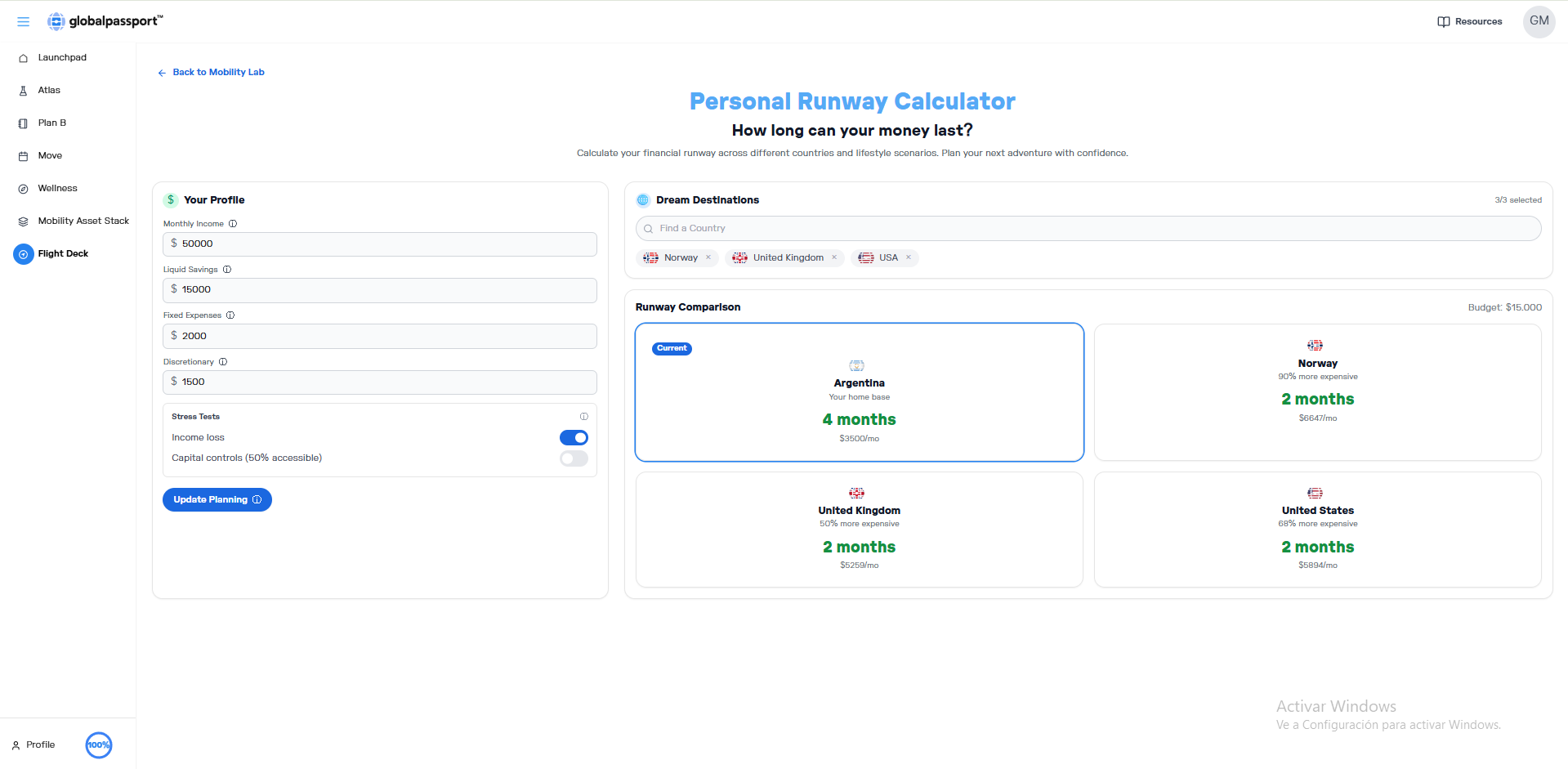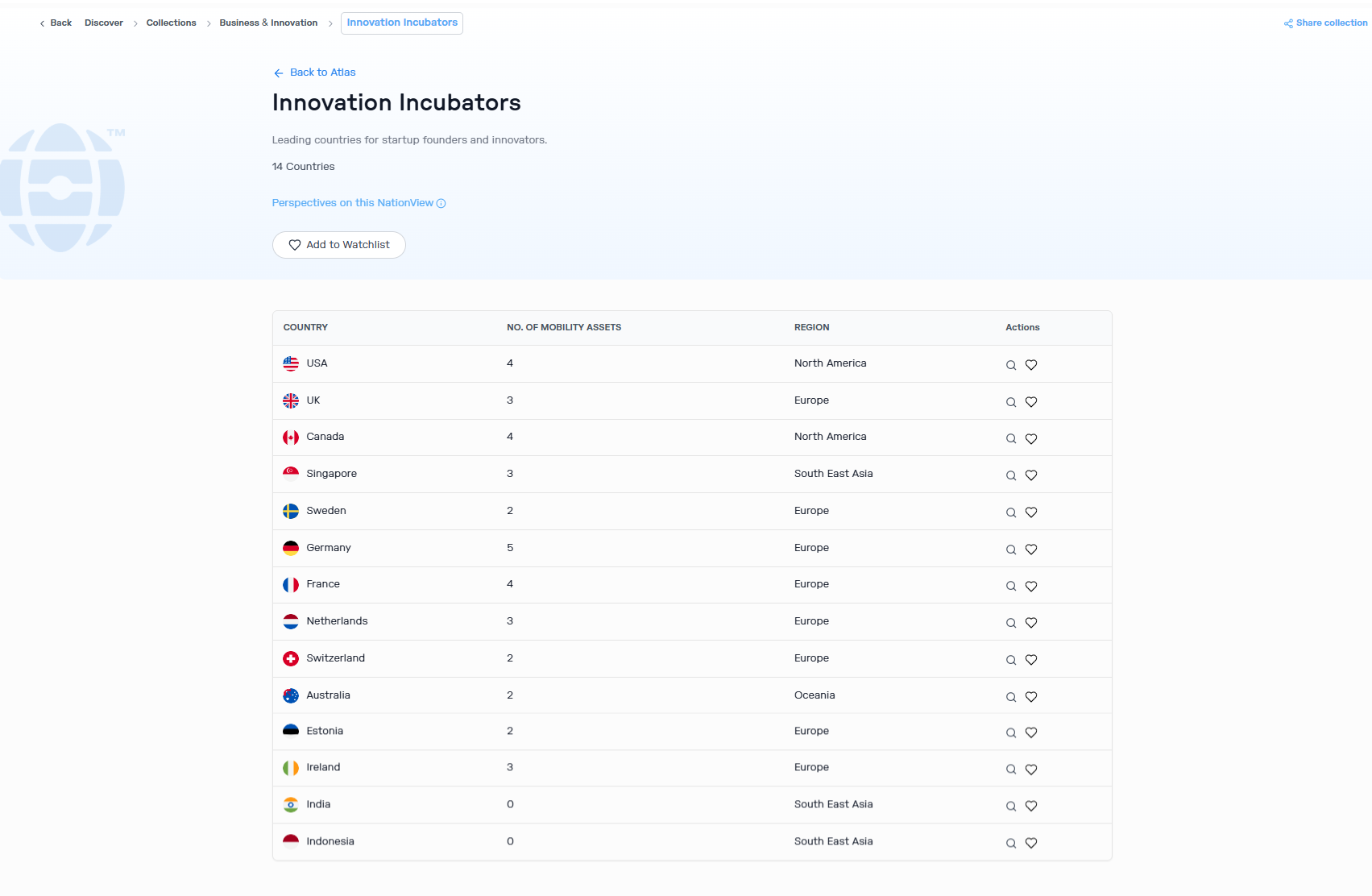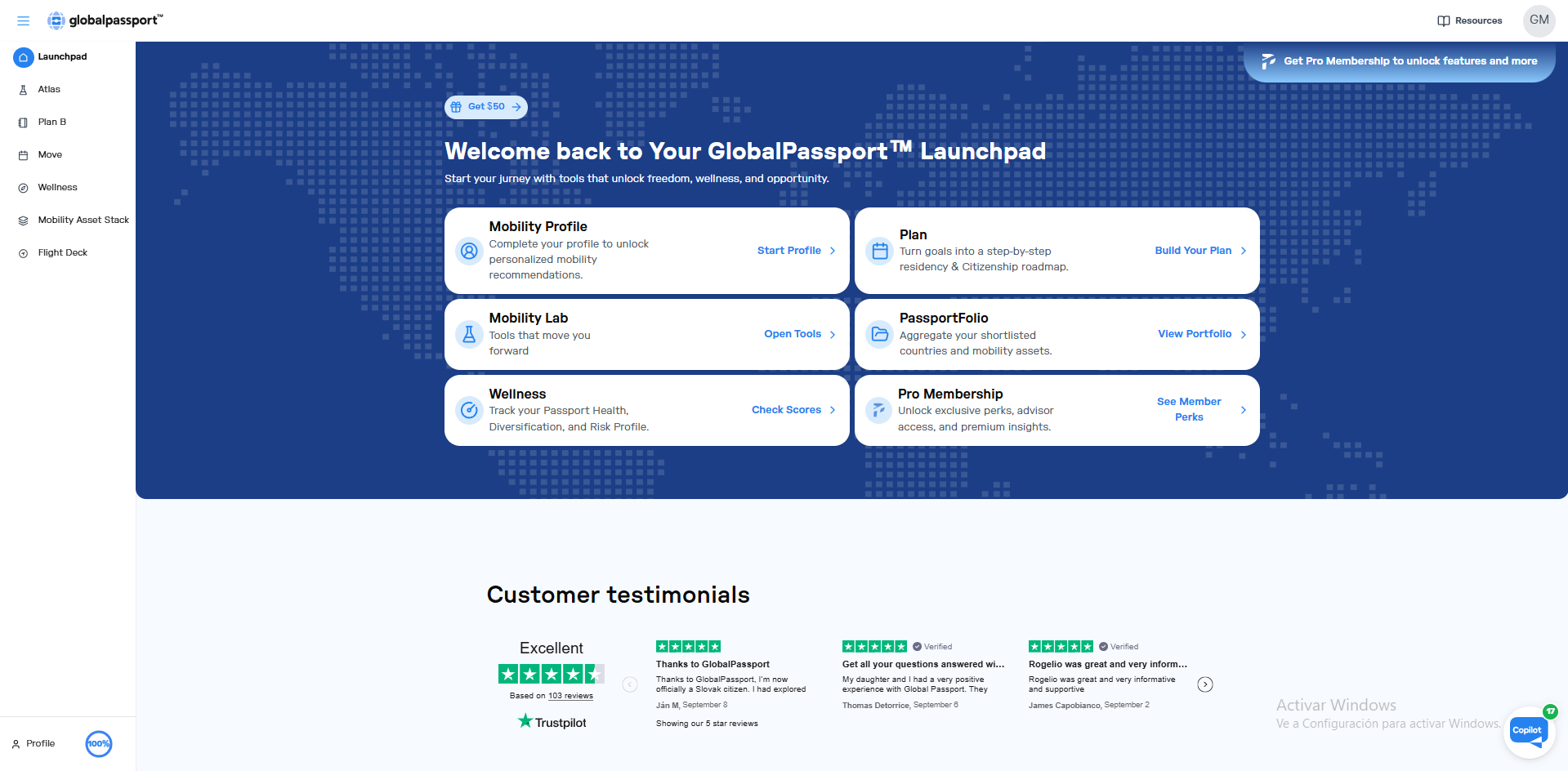A 2025 Strategic Guide to Thriving Abroad
Key Takeaways:
- You are in demand. Global tech skill shortages continue. Employers in multiple regions offer relocation and PR tracks.
- Lifestyle delta matters. Work-life norms, healthcare, and childcare make EU/CA/AUS packages competitive after costs.
- Real savings beat nominal salary. Lower costs can raise your net runway even if gross pay drops.
- Visa optionality exists. Points-based PR, Skilled Worker routes, and Digital Nomad visas expand choices beyond H-1B.
- Do the math: Use GlobalPassport’s Personal Runway Calculator to compare after-tax income, rent, healthcare, and savings by city before you move.
- Find soft-landing programs: Browse our Innovation Incubators Portfolio to see which countries actively court tech talent with founder tracks, fast lanes, and incubator-adjacent visas.
Why are American tech professionals looking for jobs abroad?
Answer: Better net savings, improved quality of life, and clearer residency paths. High U.S. salaries often lose to rent, healthcare, and childcare costs in major hubs. Many professionals seek ecosystems that value well-being alongside career ambition.
The “Dollars and Cents” Argument: Beyond the Paycheck
U.S. total compensation is high, but cost drag in SF/NYC is higher. In Berlin, Lisbon, Dublin, or Montreal, a lower nominal salary can still yield higher end-of-month savings due to rent differentials, public healthcare, and childcare support.
Quantify your move with GlobalPassport’s Personal Runway Calculator. Compare current city vs targets on: take-home pay, typical rent, taxes, healthcare, childcare, and savings. Get a “months-of-runway” score and a “break-even move” indicator so you can decide with numbers, not vibes.

The European Work-Life Balance Advantage
Work weeks often run 35–40 hours. Paid vacation is mandated. Parental leave is normalized. The net effect: less burnout, more time for learning and family, and still strong tech ecosystems.
What are the best countries for software engineers to work in?
Answer: It depends on your goal. For maximum pay: U.S. and Switzerland. For fast PR: Canada and Australia. For scale-up density and brand-name employers: Germany, UK, France, Ireland. For early-stage experimentation: Portugal, Spain, Estonia.
Start with our Innovation Incubators Portfolio. It curates “soft-landing” programs and incubator-adjacent tracks for tech talent in Ireland, France, the UK, and Germany with direct links to pathways like Ireland’s Critical Skills Employment Permit, France’s Passeport Talent (French Tech), the UK’s Global Talent and Skilled Worker, and Germany’s EU Blue Card / Skilled Worker routes. Each entry shows salary norms, tax bands, cost snapshots, and a time-to-stability estimate.

Global Opportunities for Tech Professionals. Comparative Overview (2025)
How can I work remotely from another country legally?
Answer: Obtain the correct status. Digital Nomad Visas for remote employees/contractors, Skilled Worker permits for local employment, or points-based PR if eligible.
What are the typical requirements for a digital nomad visa?
- Proof of remote work or self-employment with foreign income
- Minimum income threshold (varies by country)
- Health insurance valid in the host country
- Clean criminal record
- Sufficient accommodation and funds documentation
Top Digital Nomad Visas for Tech Workers
- Portugal (DNV): Minimum income requirement; pathway to long-term residence and Schengen access.
- Spain (DNV): Income threshold; initial validity with renewals.
- Germany (Freelance): Proof of client demand and local viability.
- Estonia (DNV + e-Residency): Governance stack that simplifies remote company ops.
Model feasibility: Open the Personal Runway Calculator from the destination page to confirm take-home pay, rent, and healthcare impacts under realistic assumptions.
Where can GlobalPassport help me find “soft-landing” programs?
Answer: The Innovation Incubators Portfolio highlights incubators, government programs, and talent visas that actively recruit engineers, PMs, and founders. Focus countries for 2025 include Ireland, France, the UK, and Germany. Each entry includes:
- Target roles and typical compensation bands
- Visa route fit and documentation checklist
- Cost-of-living and tax snapshots
- Time-to-stability estimate to PR or long-stay status
Link from this article to the Portfolio and to the matching Atlas country pages to reduce friction.
What’s my next step if I want optionality over the next 12–24 months?
Answer: Run numbers, shortlist routes, then time your application windows.
- Baseline your current city in the Personal Runway Calculator; add 2–3 target cities.
- From the Innovation Incubators Portfolio, pick 1–2 countries that match your role and salary band.
- Check eligibility for Skilled Worker vs points-based PR vs Digital Nomad.
- Gather core documents (passport, degrees, work letters, police certs).
- Book a Mobility Options Call to sequence steps and avoid intake errors.

FAQs
Do I need a job offer to move?

Is Europe worth it if salaries are lower?

Where should senior engineers look first?








Conclusion
.webp)
Interested?
Dive into the American Diaspora White Paper downloadable document now.
download WHITE PAPER
Need Help With your Application?
sign up for globalpassport
Design your mobility-asset plan
GlobalPassport Passportfolios curate ready-to-execute sets of programs that fit your goals and risk profile. Start with Graduate Magnets to spot post-study pathways and early-career routes in talent-friendly countries.
Explore Passportfolios





